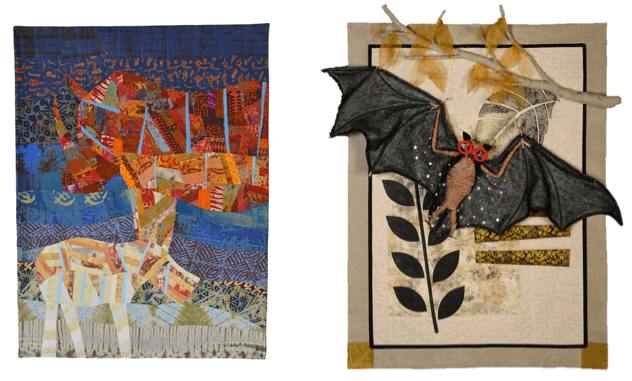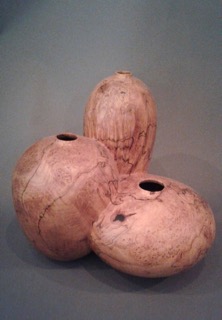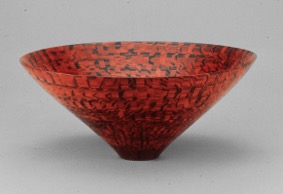The days following the Christmas holiday are anticlimactic for me. I know others breathe a sigh of relief after the cooking, hosting, gifting, and holiday travels are behind them, but it leaves me feeling “oh, now it’s just winter.” If you, too, experience a post-holiday slump, I encourage you to battle the winter blues with friends and family and a visit to the Woodson Art Museum. In addition to being warm and cozy, the Art Museum galleries offer a wonderful change of scenery.
The vivid colors and bold designs found in Wild Fabrications can brighten up even the most bitter forecast. The studio art quilts on view include exuberant portraits of animals, both real and imagined, and offer ample opportunities for conversations about the methods used and the fanciful depictions.
Take, for example, Lou Ann Smith’s artwork The Last White Rhino (below, at left). Lou Ann utilizes a process called “patchwork” or “piecing.” She cuts out shapes from different fabrics, which are sewn together side-by-side to make a new design.
Holly Altman’s Blind As a Bat (below, at right) uses “dimensional quilting.” Sewn, fabric objects literally come off the quilt resembling low-relief sculpture.

Lou Ann Smith, “The Last White Rhino,” 2015; Holly Altman, “Blind As a Bat,” 2015
Equally intriguing are the dynamic forms, exotic woods, and masterful techniques showcased in Explorations in Wood: Selections from The Center for Art in Wood. Artworks from The Center’s collection span three-decades and feature artists from around the world whose affinity for wood — a natural, malleable material — is evident as are their skills in transforming the medium.

Hugh McKay, “Tripot #5,” 1995, spalted maple, photo by John Carlano
Gorgeous grain patterns formed by burls and spalting don’t typically appeal to furniture makers and seldom find their way into commercial lumber yards. These irregularities caused by knotty growths and fungi do offer exciting design potential for artists working in wood.
Hugh McKay’s Tripot #5 (at right) is one of my favorites because of its balance between natural and man-made elements. The organic quality of the spalted maple is countered by the smooth, clean lines of the form. The expertly turned vessel forms create striking independent silhouettes but coexist as one piece of wood.
The dreamy, free-flowing grain patterns in some of the artworks are countered by the deliberate designs of others. Michael Shuler’s Cocobolo Bowl #367 (pictured below) is an impressive feat of segmented turning in which the wood piece destined for the lathe is composed of multiple, glued-together pieces of wood. The intricate, tight pattern of the bowl consists of carefully cut, glued, re-positioned, and re-cut pieces of wood, which result in a geometric marvel of light and dark cocobolo wood.

Michael Shuler, “Cocobolo Bowl #367,” 1987, cocobolo, photo by John Carlano
These two distinct exhibitions, presented together as Explore Quilts & Wood, offer fresh perspectives on familiar and beloved crafts of quilting and woodworking, elevating both to fine art. Whether you’re searching for something to do while family and friends are in town, encouraging a child on winter break to get out of the house, or simply wish to exchange the cold for the warm and stimulating environment of the Woodson Art Museum’s galleries, I invite you to visit and delight in the hundred-plus objects on view in the Explore Quilts & Wood exhibitions.




